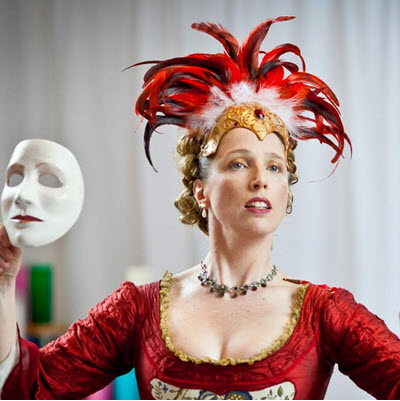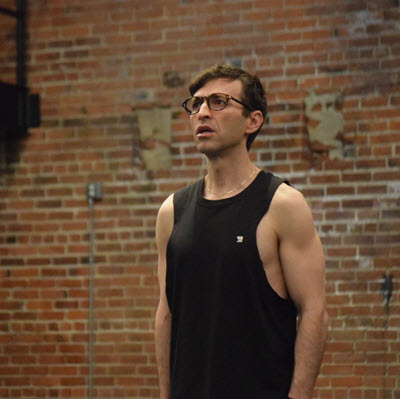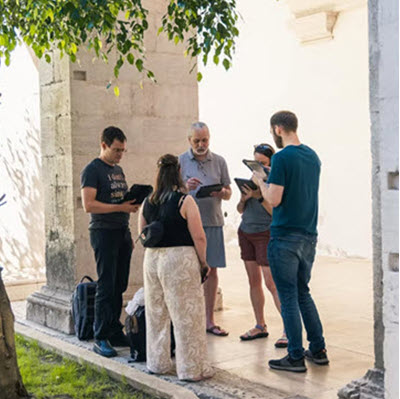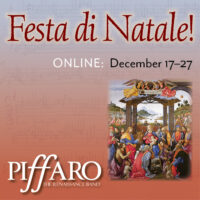by Ashley Mulcahy
Published April 14, 2025
The Oklahoma Baroque Orchestra is committed to finding and fostering local talent
The goal is to make a self-sustaining early-music scene in Oklahoma City. In addition to welcoming new players into historical performance, OKBaroque acts as a nexus for musicians who are already in the region.
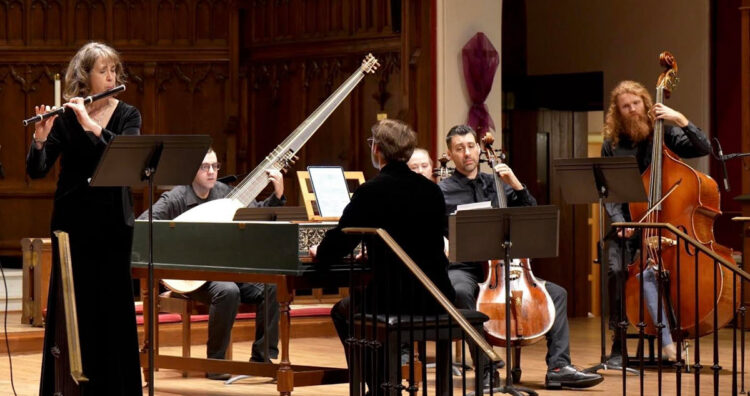
Born, raised, and educated in Oklahoma, Dylan Madoux — founder and artistic director of the Oklahoma Baroque Orchestra — used to dream of being pretty much anywhere else. “I wanted to get out of Oklahoma for so long,” he confesses.
But Madoux has since reversed course and is now putting down deep musical roots into the dusty red ground.
The Oklahoma Baroque Orchestra (OKBaroque or OBO) gives the final performance of its season Saturday, April 26, with “Haydn’s Vienna,” a program of Haydn, Mozart, and their contemporary Marianna Martinez. Fortepianist Sylvia Berry will perform a Haydn concerto, with vocal selections sung by soprano Sarah Moyer. An Oklahoma native, Moyer’s resume includes an impressive list of well-known early-music ensembles across the country. She embraces her collaborations with OKBaroque as valuable opportunities to contribute to her home state: “I see a constant upward trajectory with this ensemble administratively and artistically. It gives me so much hope for the future of historical performance in Oklahoma.”
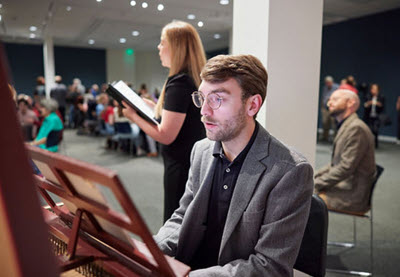
OKBaroque came into existence in 2022, a time when Madoux found himself at a crossroads, rethinking his plans for a DMA. The volunteer modern-instrument chamber orchestra he founded during his undergraduate years had just rebranded and professionalized as the Oklahoma Baroque Orchestra — a change motivated by his evolving repertoire interests, his recently acquired harpsichord skills, and an opportunity to fill a gaping void in Oklahoma City’s musical offerings.
In a job market where university collegium directorships are rare and the odds of taking charge of an existing professional ensemble are slim, Madoux opted out of doctoral studies to fully dedicate himself to the OKC ensemble and the community that it serves. He has no regrets.
“I’ve seen that by fully investing myself in this community that I’ve known and loved, it’s a lot easier to be passionate about not only the music and musical quality but also about fostering a community that really cares for this art form,” he says. “I’m not sure that I would have been able to do that if I had moved away. I’ve been very content staying in Oklahoma and really pursuing early music here. It’s an important thing to have and something that was certainly lacking.”
Madoux may have foregone more schooling, but he has not compromised his education. “I get a DMA education every time I step into a rehearsal because I’m always learning something new, and there’s no better way to learn than by doing,” says Madoux. “I’ve always been somebody who wants to be the dumbest in the room,” he adds, unabashedly. “The combined knowledge of everyone in the room is much more than what I have. And so, I’m not afraid to lean on others — it doesn’t hurt my ego to say ‘I don’t know.’”
This ethos has not gone unnoticed. As tenor Nathan Dougherty, a Case Western Reserve University graduate and now assistant professor of musicology at the University of Oklahoma attests, “One of [OBO’s] greatest strengths is the ensemble’s deeply collaborative and trusting atmosphere. Dylan always works closely with musicians when programming, allowing us to have a say in what gets done.” This past spring, for example, “he allowed me to design an OBO-sponsored recital for soprano, tenor, and guitar that explored the role of women in 19th-century Parisian salons, drawing on my musicological research.”
Not long after OKBaroque’s rebranding, they managed to fund-raise enough to bring in out-of-town guests to play with the local musicians that Madoux already knew and loved. This, too, has provided welcomed learning experiences, including working with colleagues such as fortepianist Berry, soprano Moyer, and keyboard player Dongsok Shin.
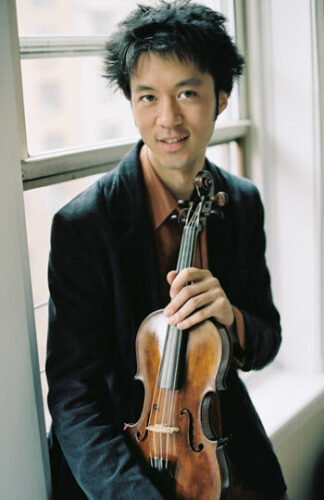
Key to the orchestra’s artistic growth are two out-of-town violinists, Francis Liu and Edmond Chan, who both bring impressive historical performance credentials. They provide guidance to other players who are newer to historical performance.
“I’m happy serving as a resource for the players involved with OBO and many others I’ve met in the Oklahoma City area,” says Liu, OKBaroque’s concertmaster, a graduate of Juilliard’s Historical Performance program and a regular with such groups as Tempesta di Mare, the Handel and Haydn Society, and the Trinity Baroque Orchestra. “There’s so much curiosity and enthusiasm here from both musicians and audiences — people really want to know more about the instruments and stories surrounding this repertoire,” says Liu.
Liu’s trips to Oklahoma often include visits to local universities, for which Dougherty, the tenor and musicologist, is very grateful. “Our partnership with OBO has been instrumental in helping students figure out the basics” says Dougherty. “The University of Oklahoma does not have applied teachers for historical instruments. I do my best to help them, but, as a singer, my focus tends to be on style, performance practices, and sense of ensemble, rather than on technique. So, lessons and workshops by OBO’s visiting musicians have really helped to address that gap.” Over time, some University of Oklahoma students have even become OKBaroque players.
This potential for local reciprocity is Madoux’s guiding star. Rather than relying on highly-credentialed guest artists, his goal is to “make a kind of self-sustaining early music scene in Oklahoma and the region.” Madoux is interested in collaborating with regular guests who, like Liu, are on board with supporting that long-term project. “We need to bring up the early musicians here so that can be passed along to other musicians here,” Madoux says.
Dougherty counts this “commitment to finding and fostering local talent” among OKBaroque’s greatest strengths. He’s seen first hand that the decision to rely on and invest in mostly local players “has the effect of making the ensemble feel like it belongs to Oklahoma City, that it is authentically a part of Oklahoma City’s culture more broadly, that it is invested in the cultural well-being of the region.”
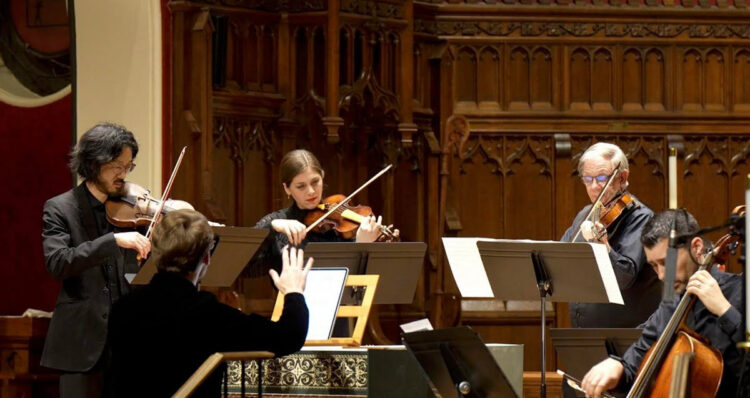
The first buds of a “self-sustaining early music scene” have already started popping up. “Several of our players have bought their own instruments, or what we find in strings is they slap some gut onto an older modern instrument that they have and then use a Baroque bow. One of our violists is having a viola converted to a Baroque instrument this year. And so we were slowly seeing that happen now that people have gotten a taste for it,” Madoux reports.
The Advantages of Creative Control
In addition to welcoming new players to early music, OKBaroque acts as a nexus for those early musicians who were already thriving in Oklahoma, including two accomplished specialists on historical plucked instruments, Carey Morrow and Joseph Harris. Both returned to their native Oklahoma after completing graduate studies with lute legends Nigel North at Indiana University and Paul O’Dette at the Eastman School of Music, respectively.
Morrow, who “wasn’t expecting much in terms of early music” upon his return to Oklahoma, has been “pleasantly surprised to find a growing scene.” He’s eager to dispel this disbelief: “I enjoy sharing with others just how much music and art is happening here. There’s a vibrant and supportive community that often surprises people from outside the state, and it’s rewarding to be part of that.”

Joe Harris, the first-ever lute student at Oklahoma City University, has embraced OKBaroque as “a place where [everyone] is on the same level as far as what we want out of this and what the goal is.” Harris, who says he didn’t really know what a lute was until he was 30, upended his career in computer science to go back to school and pursue degrees in plucked instruments. (In 2017, he was awarded an EMA Summer Workshop Scholarship, and wrote about it afterwards.)
Harris is an active member of University of Central Oklahoma’s early-music community through his participation in Baroque operas presented by the school’s Bisch Center for Historical Performance. However, having left Oklahoma for a time, Harris is aware of the advantages that come with being a one-of-a-kind organization in your community: “In a way, what we have here in Oklahoma is a really huge opportunity, because we have creative control about what we want to do. And there’s no one else to do it.”
He also feels the weight of the unique challenges that come with developing early-music activity back home. “One of the issues about early music in Oklahoma is the geographical layout. Everything is so far apart. It’s not as convenient as Boston where you have people come from Connecticut, from New York — it’s not that bad of a trip. Here, you have to take a flight or drive something like seven hours from any other location.”
Financial challenges also play a role. “The arts in Oklahoma are not well funded, just like education,” he bemoans. Harris points to a 2023 study that reports a 37-percent decline in state appropriations for the Oklahoma Arts Council between 2008 and 2023. A precipitous drop in funding, coupled with significant population growth over that same period, has resulted in a reduction in annual state investment in the arts from an already dismal $1.41 per person to just $0.80 per person.
But, as soprano Moyer believes, “Oklahomans are truly the nicest people on this planet,” and the orchestra is buoyed by many forms of local support, something that Northeasterner Liu has quickly picked up on: “Whether it’s sourcing a particular instrument, or looking for the right venues, Dylan always seems to know someone who can help. He’s a great role model in demonstrating that it pays to think local.” A lot of support comes from local universities, who lend instruments and whose faculty and students are frequent OKBaroque collaborators.
This includes David Howard. In addition to his position as interim director of choral activities at the University of Oklahoma, Howard is the founder and director of the recently formed Schola Cantorum Oklahoma, an ensemble “dedicated to the performance of unaccompanied and accompanied secular and sacred vocal music from 1450 to 1750.” While the ensemble has no official University of Oklahoma affiliation, its roster is stacked with current students and alumni. Recognizing that a narrower repertoire focus would not necessarily best serve the students in his Men’s Glee Club and Women’s Chorus, Howard founded Schola Cantorum Oklahoma to create an outlet to further explore his own repertoire interests. Earlier this season, in November 2024, Schola Cantorum Oklahoma joined with OBO for a program of grand motets of the French Baroque.
French Baroque grand motets are unfamiliar territory in any of the 50 states. But in Oklahoma, audiences will show up for musical obscurities. Dougherty and many others take inspiration from this level of support. “I think the most remarkable thing to witness is the consistent and rapid growth of the audience. [OKBaroque] is only a handful of years old, but each concert I attend has a larger audience, many of whom also show up for the pre-concert talks,” he notes. Their orchestral concerts consistently bring in over a hundred people and that concerts on their salon series bring in a healthy 50 to 70.
One of my favorite things about being a musician in Oklahoma is the audiences,” says Morrow. “After concerts, I often speak with audience members who say it’s their first time hearing an early-music ensemble — and they’re eager to hear more.” With an audience eager for more and a growing community of early musicians eager to provide, it seems that the potential for a thriving early music scene in Oklahoma is nowhere near capacity.
Ashley Mulcahy is a mezzo-soprano based in the Boston area and co-director of Lyracle, a voice and viol ensemble. For EMA, she recently wrote about the 70-year history of the Boston Camerata.

